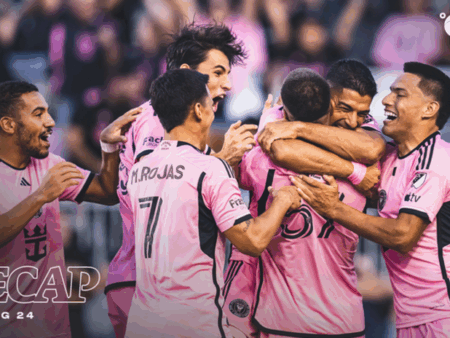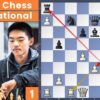In the sprawling universe of fantasy hockey, where legions of managers meticulously pore over player statistics and injury reports, a curious anomaly has emerged: the four-team league. For years, traditional 10- or 12-team formats have reigned supreme, demanding an almost archaeological dig for talent in the later rounds. Yet, a recent shift suggests a growing appreciation for the more intimate, high-octane environment of smaller leagues. This isn`t just fantasy hockey; it`s luxury fantasy hockey, where every roster spot is a star, and the waiver wire often resembles an all-star game roster.
The Paradox of Abundance: A Small League`s Unique Charm
Imagine a draft where the `scraps` of talent include players who would be coveted first-round picks in any other format. This is the delightful predicament of a four-team league. The goal isn`t just to find good players; it`s about optimizing an already stellar lineup, building an absolute juggernaut from an embarrassment of riches. The strategic shifts are profound: no longer are you simply seeking viable starters, but rather fine-tuning a collection of bona fide superstars. It`s a game of discerning the best among the elite.
The Tkachuk Conundrum: A Masterclass in Risk Management
A prime example of the nuanced decision-making in these rarefied drafts is the Matthew Tkachuk dilemma. A perennial top-10 talent, Tkachuk finds himself sidelined with a groin injury, projected to return no earlier than December. In a standard league, drafting such a player early would be a high-stakes gamble, potentially crippling your team`s early-season performance. However, in the realm of four-team leagues, the calculus shifts dramatically.
With IR (Injury Reserve) spots readily available, Tkachuk transforms from a liability into a potential cheat code. He occupies an IR slot, costs you nothing in terms of immediate active roster space, and when he returns, you gain an `extra first-rounder` for the playoff push. The question isn`t if to draft him, but when. Managers engage in a subtle game of chicken, waiting just long enough to secure him before a rival recognizes the undeniable long-term value. It`s a strategic maneuver that highlights the abundance of depth; you can afford to “stash” a superstar because your active roster is already overflowing with talent. The irony, of course, is that in a league designed for simplicity, a new layer of sophisticated, long-term planning emerges.
Beyond the First Round: Crafting a Championship Roster
Given the unparalleled talent pool, what constitutes a winning strategy? A recent mock draft among experts revealed a fascinating divergence of approaches:
- Goaltending Dominance: Some managers prioritized snagging multiple top-tier netminders early. The rationale is simple: controlling half the league`s elite goalies provides a consistent edge in quality starts, allowing for more flexible streaming of skaters. In a world where every skater is a point-producer, reliable goaltending becomes a critical differentiator.
- Forward Powerhouses: Others opted to load up on elite offensive forwards, believing that consistent goal-scoring and assists would outpace any minor deficiencies elsewhere. With players like MacKinnon, Pastrnak, and Kucherov forming the core, the sheer volume of offensive production becomes overwhelming. The belief here is that even “good” blueliners and netminders, supplemented by a star-studded offense, can carry the day.
- High-Ceiling Youth: A bolder strategy involved targeting high-ceiling young prospects alongside established stars. While a gamble in deeper leagues, the robust talent on waivers in a four-team format mitigates the risk. If a young gun doesn`t pan out immediately, a capable replacement is usually just a click away. It`s about maximizing potential without fear of a significant downside.
Each approach, valid in its own right, underscores that even with an embarrassment of riches, strategic intent remains paramount. The decisions become less about filling a roster and more about optimizing a powerhouse.
The Waiver Wire: A Hidden Gem Mine
Perhaps the most perplexing yet advantageous aspect of a four-team league is the waiver wire. In larger leagues, this is where dreams go to die, a barren wasteland of unproven prospects and injury-plagued veterans. In a four-team league, however, it`s a treasure chest. The sheer volume of undrafted, high-quality starters—think Alex DeBrincat, Jordan Kyrou, Nico Hischier, or Bo Horvat—is staggering.
This changes the in-season management dynamic entirely. Slumps become less catastrophic; an underperforming player can be swiftly replaced by another proven commodity. It empowers managers to take more risks with their initial draft, knowing that a safety net of legitimate talent awaits. The “replacement level player” in this format would be a mid-round pick in a 12-team league, making for incredibly dynamic and high-scoring matchups throughout the season.
The Human Element: More Fun, Less Scraps
Ultimately, the appeal of the four-team league boils down to a more streamlined, less stressful, and arguably more enjoyable fantasy experience. The “fun novelty” of challenging a small, elite group of opposing managers with your own curated collection of hockey`s best is undeniable. There’s less time spent agonizing over obscure third-line wingers and more time celebrating the offensive explosions of true superstars.
It`s a format that allows you to truly revel in the spectacle of hockey`s top talents. While the strategic nuances are still present, the overarching feeling is one of abundant opportunity rather than scarcity. For those who appreciate the cream of the crop, without the academic `nausea` of deep dives into obscure stats, the four-team fantasy hockey league offers a refreshing, albeit luxurious, take on the game. It proves that sometimes, less can indeed be more, especially when “less” means a roster packed exclusively with hockey royalty.








